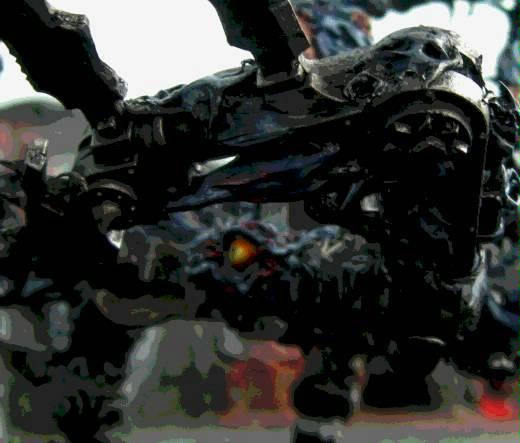
“The Outcast begs an audience, my lord,” sniffed Eloq
E’Asuu nodded, amused by his major domo’s superciliousness. Under other circumstances, Eloq would tremble to stand within reach of a daemon as ancient and powerful as the one he now led into the chamber. Yet now…
The Lord of Change leaned forward, studying the beast as it approached the dais.
Auax still smoldered with rage, E’Asuu noted approvingly. He may have been brought low, his dominions despoiled, his followers scattered, but he had not come to beg or truckle. Sulfur leaked from his pores, his eyes darted fiercely around the audience chamber, and though he carried himself suitably humbly – head bowed, claws sheathed, haunches low – the beast still brimmed with feral menace. He was supremely dangerous, a cornered animal.
He was perfect.
The “Altar of Souls” is one of the centerpieces of my army. It’s probably my most ambitious conversion, and while the creature doesn’t always perform impressively on the battlefield, it does something equally if not more important: It communicates what my army is all about. It tells the story of the Harrowed.
For those unfamiliar with Games Workshop’s general concept, a soul grinder represents a construct fashioned in the Forge of Souls, a blasphemous creation that fuses one of the Warp’s higher ranked daemons to the salvaged wreckage of a war machine.
The concept fits the theme of my army perfectly. Within the Harrowed, I think of the Soul Grinder as an Imperial Guard tank, perhaps a Baneblade, once revered for its loyal Imperial service, now possessed by the Ruinous Powers. Daemons have ripped apart and reforged the vehicle, transforming it into a baleful, blasphemous engine. Even as it strides into battle, it feeds on the souls of its former crew.
“Curious, how circumstance tugs our condition this way, then that,” E’Asuu observed, his voices chirruping brightly, cawing harshly, chorusing raggedly, just on the edge of cacophony. “Lowly servants become mighty sovereigns as the Warptides wax. Mighty sovereigns are brought low and cast into exile as the tides wane. Fortunes flex and flux. Boon gives way to bane, and often it becomes impossible to tell the one from the other.”
The object of this moral lesson, the daemon Auax, said nothing. Merely regarded E’Asuu, tail snapping behind him, bile acid-hot in his chest.
E’Asuu smiled—sweetly with one visage, grimly with the other. “Why do you come to our court, Auax-outcast? What is it you seek of us?”
“Vengance. The chance to repay my enemies. The means to make war again. Give me iron, E’Asuu E’Aglaa. Give me armor, give me cannon and fire and claws. If I cannot rule, now let me rend, let me ruin, let me lay waste to those who conspired against me.”
E’Asuu sat back in his throne, savoring the moment. “You are much reduced, Auax. It seems to us that when last we crossed paths, aeons ago, you vowed to cut our hearts out and feed them to your hounds.”
“Aye, so I did,” the daemon growled.
“Pray tell us, then, why we should grant you such formidable powers as you now seek? Why should we succor one who, in years past, declared himself an enemy?”
At that, Auax grinned. “Actually, I thought the illogic of the idea might appeal to you, twisted one.”
Delightful! E’Asuu felt a frisson shiver through him. “Indeed it does,” he murmured.
Here’s how I put the creature together.
I started with the chassis of the GW Soul Grinder kit, planting in it two thick wires (from a coat hanger), twisted so that they spiraled in a sort of helix shape upward out of the engine.

My idea was that the souls the machine was grinding would be visible, writing within the creature itself.
To which end I affixed bodies, limbs, faces along the length of the “soul spirals.”

I also worked possessed souls onto the creature’s blades and spikes…
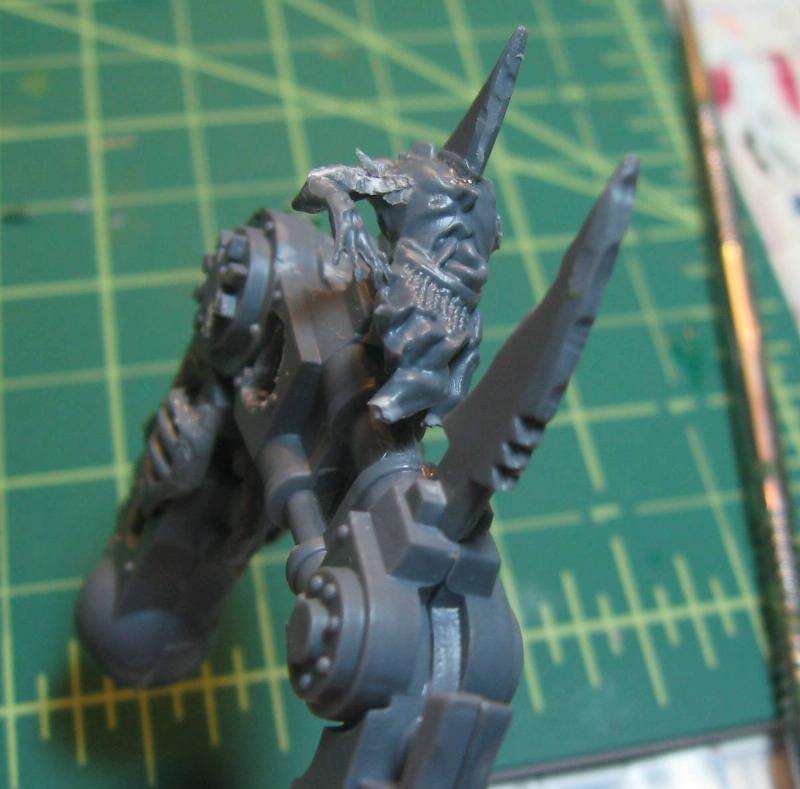
… and into the legs of the thing.
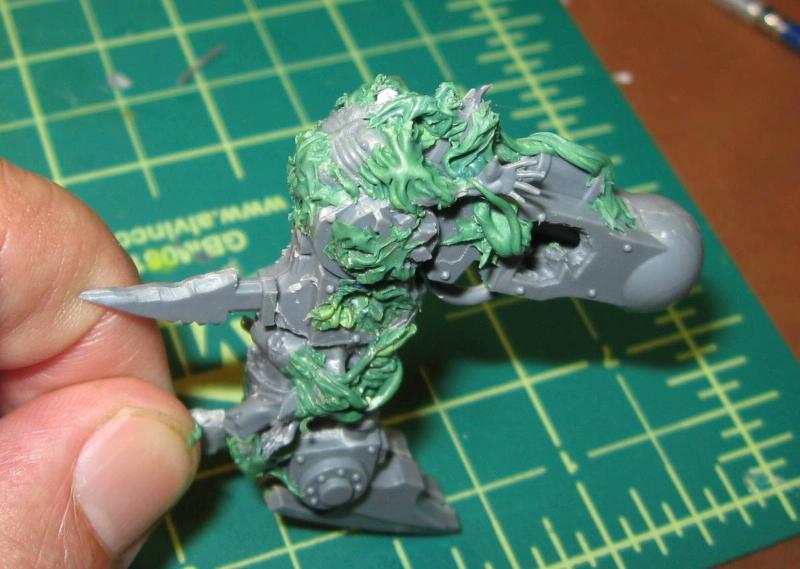
At one point, taking inspiration from the “Porch of Maidens” on the Acropolis…
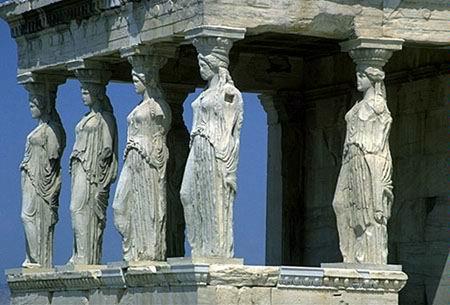
…I fashioned my own, haunted take on the concept:
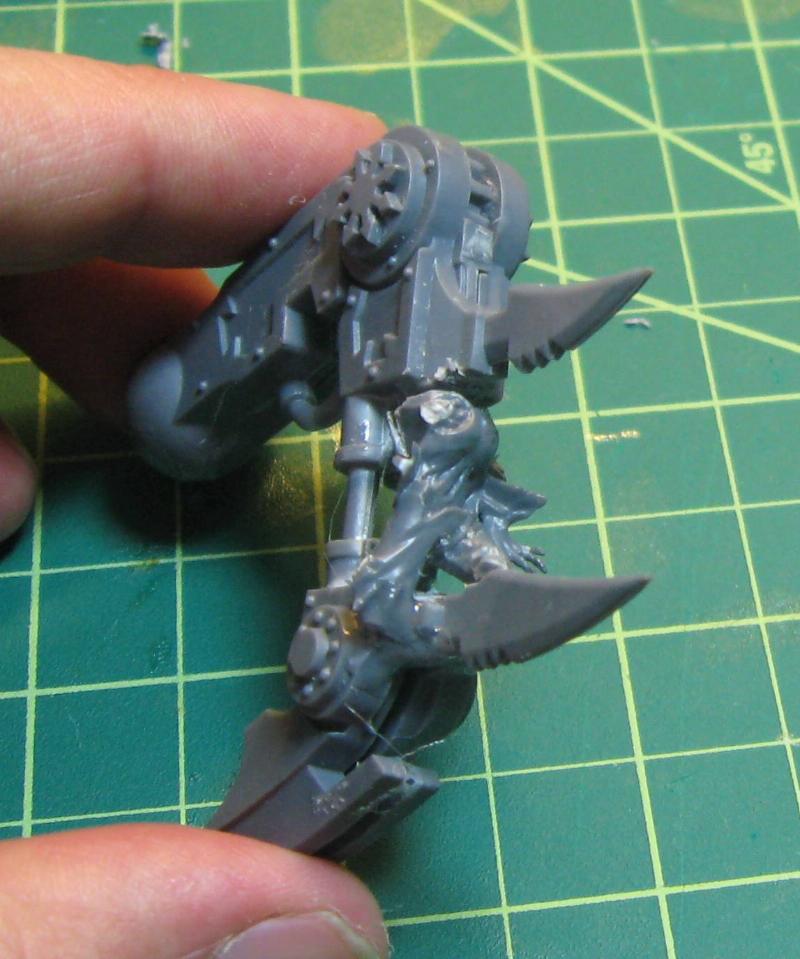
And as I went along, I began sculpting in layers of coils, of gore, of daemonic tissue…
Maiden leg with daemon tissue
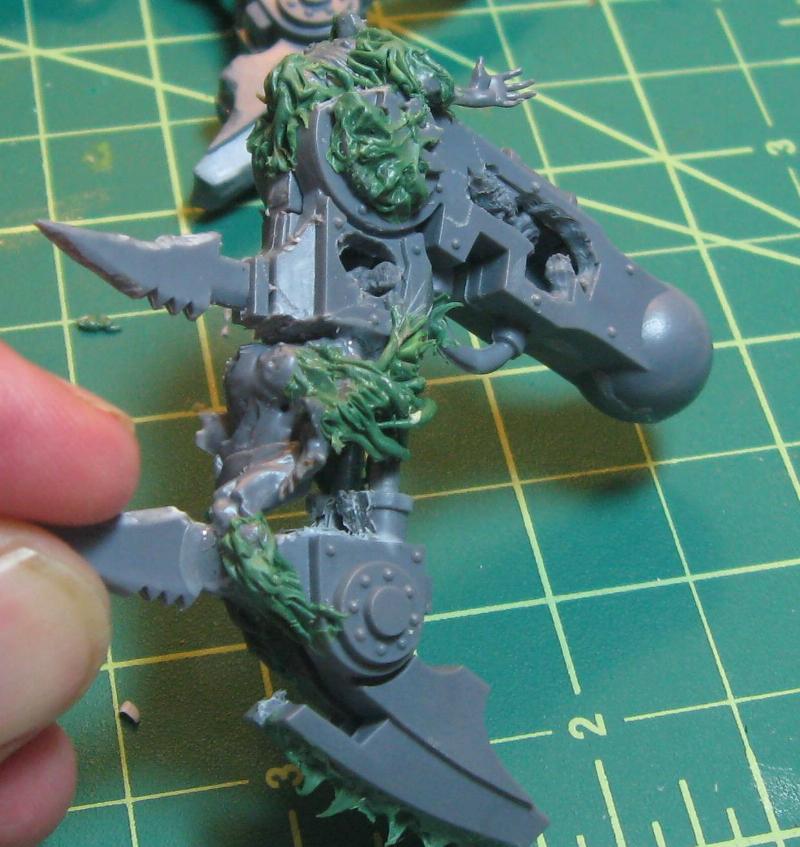
For a “maw” (one of the Soul Grinder’s most fearsome weapons), I fashioned a series of writing mini-maws, swallowing souls:
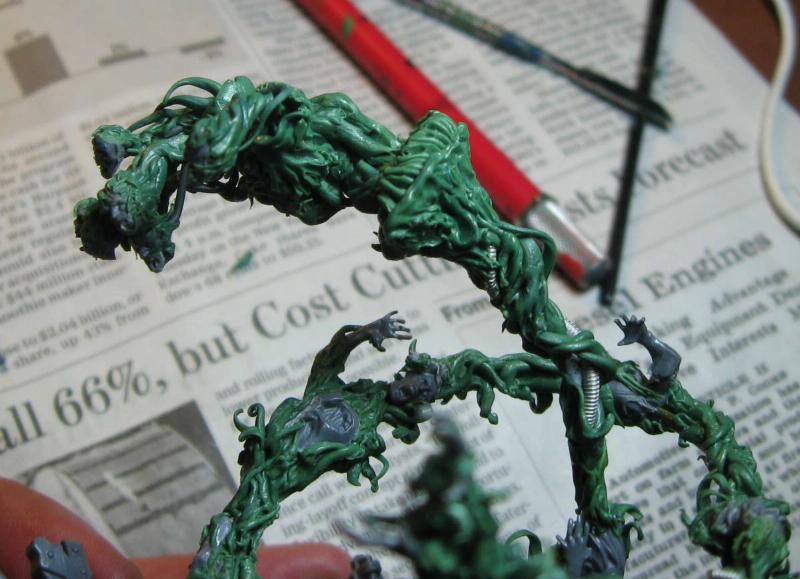
By the time it was done, I had consumed a lot of greenstuff, and produced a writhing, seething mass of spasming violence.

And then I went to work painting the thing:
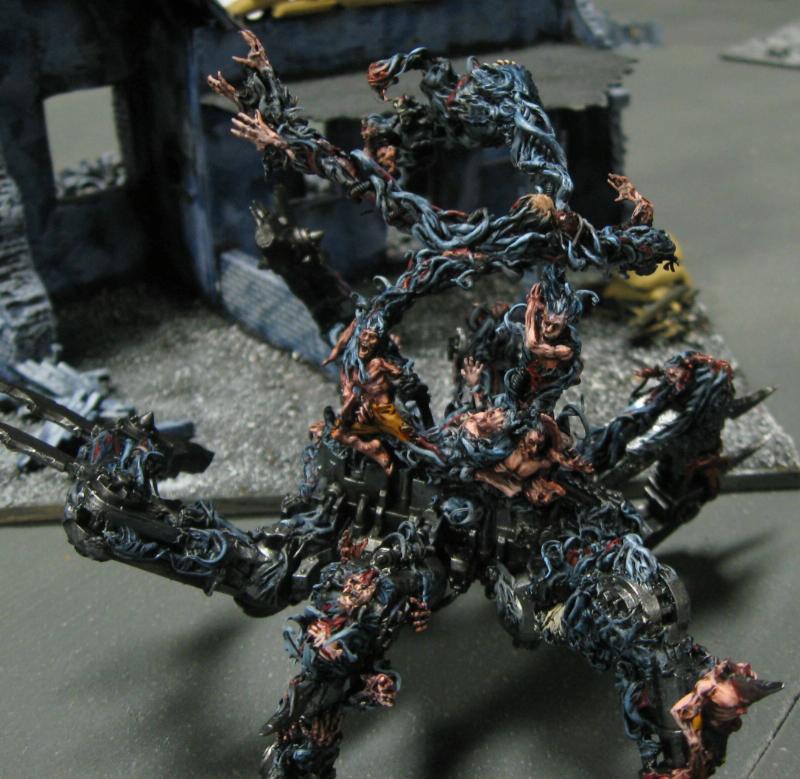
What I most like about the way this particular project came out is that it looks (at least to me), like it’s truly haunted.

